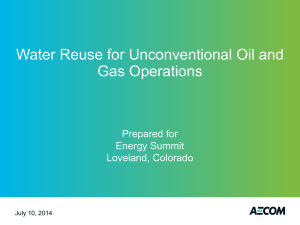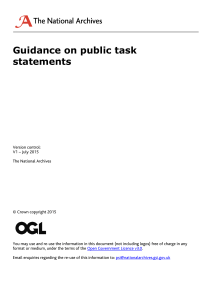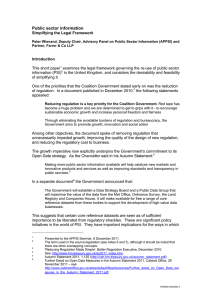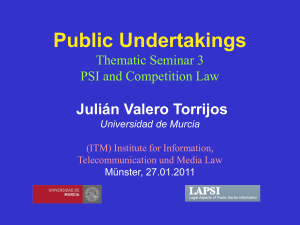What Determines the PSI Value Chain Characteristics
advertisement
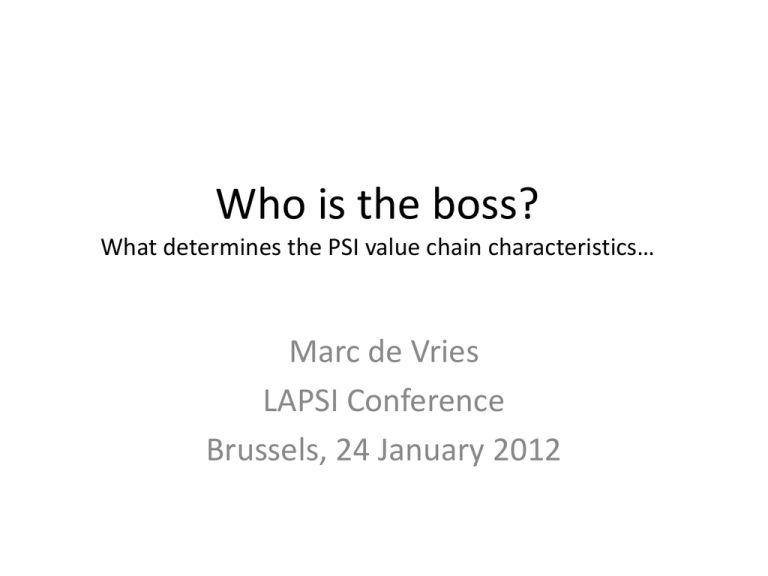
Who is the boss? What determines the PSI value chain characteristics… Marc de Vries LAPSI Conference Brussels, 24 January 2012 Preliminary considerations • Competition law and PSI re-use • Internal debates on role of PSI Directive in relation to general rules of competition law – Is it a sectoral measure? – What role plays public task? – Does the Directive put the public sector bodies in a disadvantageous position? • value chain characteristics determine the impact of the Directive to regulate the (PS) information market • What are the distinctions between PSI domains, what drives them, in other words: who is the boss? PSI value chain Create (produce, collect, compile) Collect, compile Public task Public domain task domain Distribute Re-use Outside Outside public task public task Legal information value chain Produce Collect, compile Distribute Re-use 1995 • Production is by definition public task • Traditionally only production was considered public task • Power was with distributors: owned compilation process and distribution platforms • Valuable but in an integrated form, # of re-users small • Re-users added sufficient value to stop them from integrating backwards + no clustering of demand • High entry barriers, no substitutes • Government took step forward, changed perception of public task • Pushed publishers forward in value chain, no charges Produce Collect, compile Distribute Re-use 2012 Traffic information/topographic information value chain Produce Collect, compile Distribute Re-use 1995 • Technology allows for non public sector parties to do sourcing • Up stream competition between public sector and market parties • Down stream competition between public sector parties and market parties • Even internal public sector users switch to market parties products • public task charachter has become questionable • Only specific use within government justifies information to be PSI (defence, weather, public safety) Produce Collect, compile Distribute Re-use 2012 Cadastral information value chain Produce Collect, compile Distribute Reuse Reuse 1995 • • • • • • Production up to distribution is by definition public task No up stream competition possible, no substitutes High risk, high value, high # of re-users, big economic potential Re-use done by national cadasters Technology allows public sector to step forward, but (Big) niche players seek re-use possibilities, PSI holders rely on IPRs • Reliance on re-use income refrains Public sector to step out Produce Collect, compile Distribute Re-use 2012 Meteo information value chain Produce Collect, compile Distribute Re-use 1995 • High value data, mass consumption • Public task charachter case clear • Also, infrastructural investments and international set up disallow private sector to step in up stream market, so no upstream competition • Distinction between professional and mass markets (down stream) • Private sector has power over (alternative) distribution channels: integration with other content • Division between NMI’s that have stepped out and those that stay in • Fierce competition in professional markets Produce Collect, compile Distribute Re-use professional M Re-use consumer M 2012 In summary • Legal info: Directive (and technology) has done its job: market opened up, exclusive deals killed, level playing field allows general competition law to function properly • Maps and traffic info: upstream competition has done its job, down stream effects of Directive may be detrimental • Meteo and Cadastral info: no upstream competition, competition concerns are clear, especially where PSB reliance on re-use income substantial: – Directive must guard demarcation between public task and re-use activities – Rules of general competition law must guard against abuse of dominance conclusions • There is no such thing as PSI • Impact Directive will depend on shift power in value chain it will bring about • General rules of competition law remain to have role in other parts of value chain • Demarcation of public task is essential

